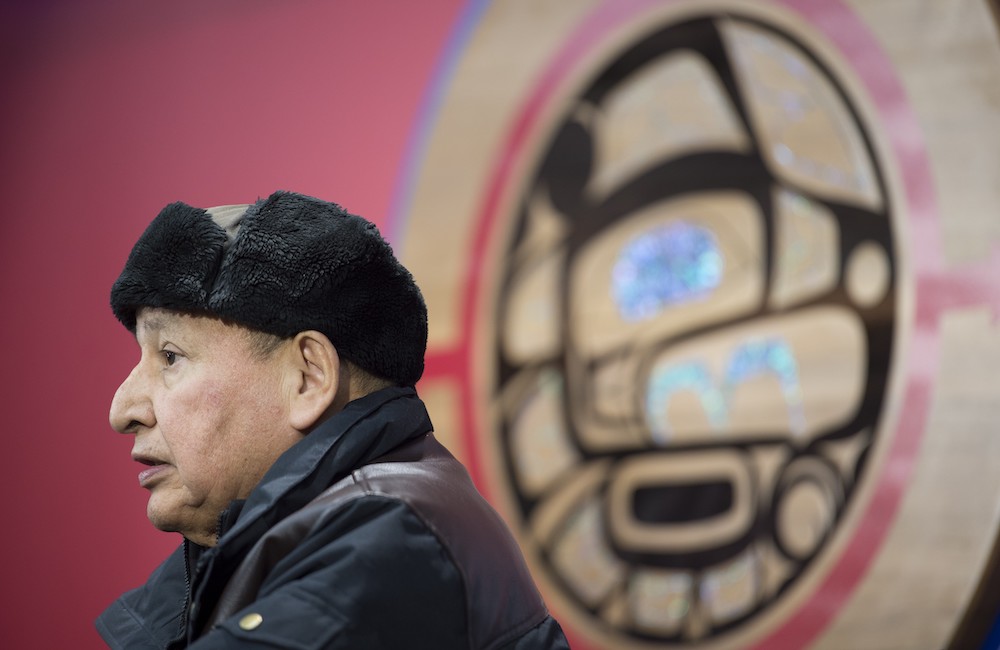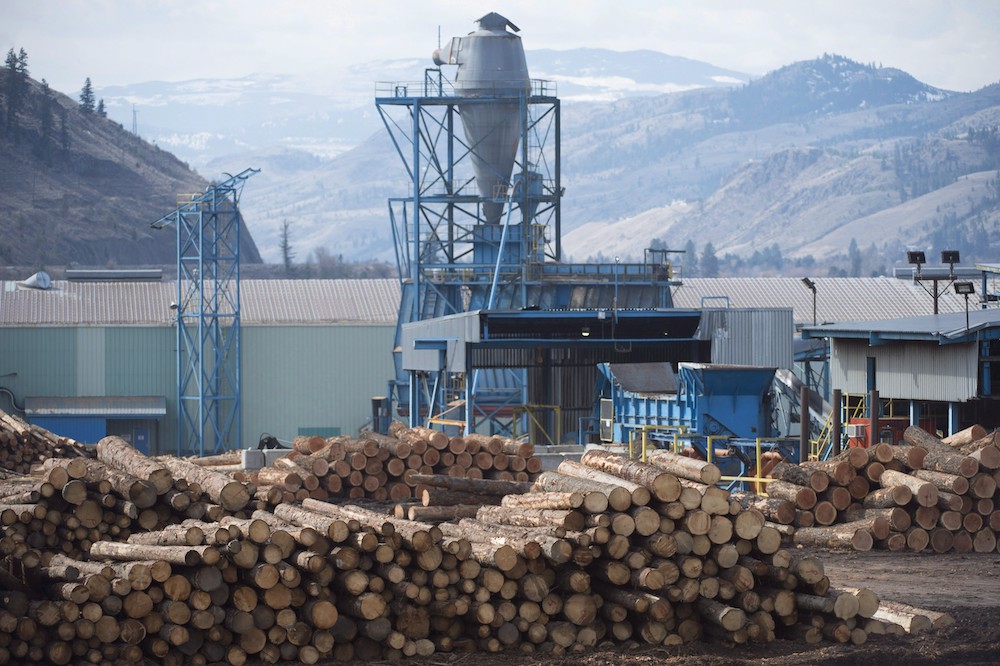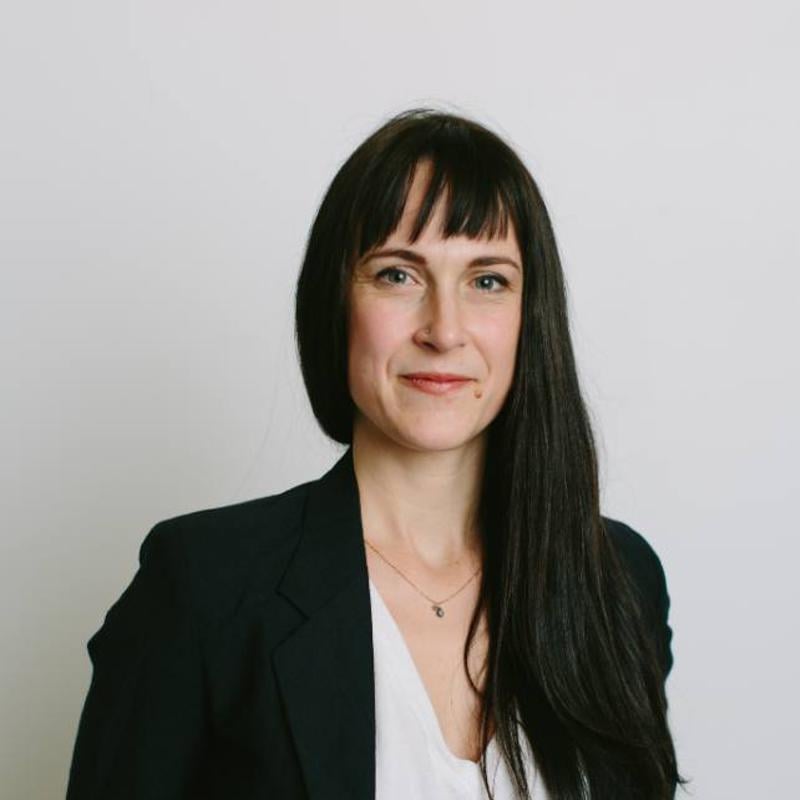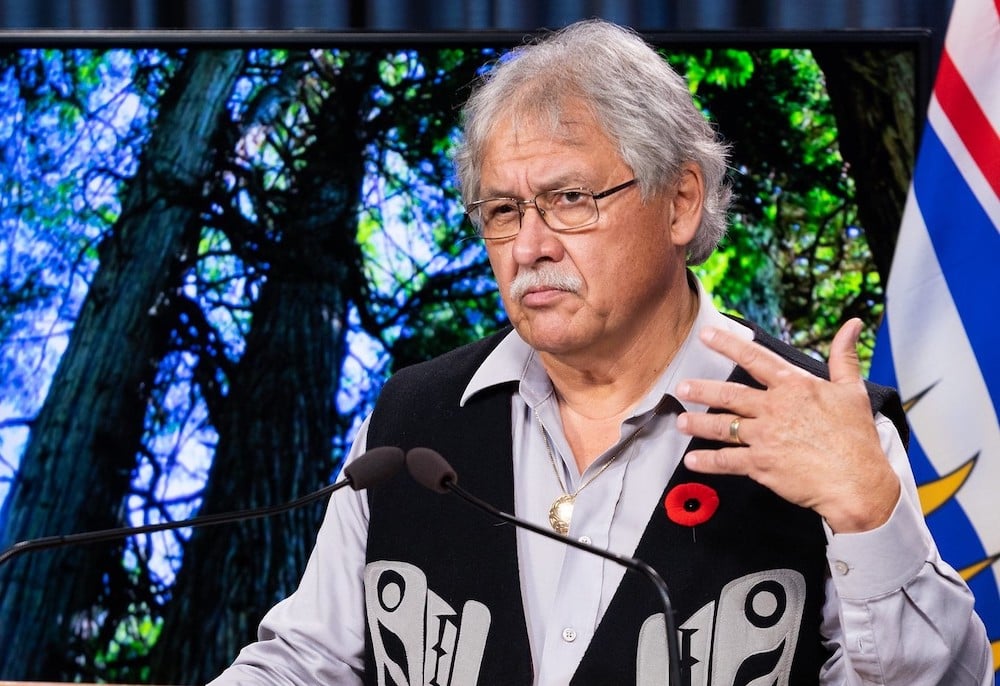In June, as Fairy Creek protests filled headlines, the B.C. government pressed pause on some old-growth logging in the area. Now the province has reached for the brakes again, potentially setting aside 2.6 million hectares of at-risk old growth across the province, pending the approval of First Nations.
“Deferral” is the government’s term for these interruptions. Rather than banning logging outright, the province claims to be modelling a more collaborative approach with First Nations, who can ask that logging in their territories be temporarily halted while bigger conversations around land use take place.
Some say this signals the beginning of a “paradigm shift” in how B.C.’s ancient forests are managed, while others express skepticism the ingredients for change are on the table, after decades of deregulated forest policy.
Union of BC Indian Chiefs president Grand Chief Stewart Phillip described Tuesday’s announcement as “a big puff ball,” because it puts the onus on First Nations to make difficult decisions without the proper supports in place.
“This is a plan for fragmentation and ecosystem collapse,” said Michelle Connolly, director of the group Conservation North, suggesting that deferral areas leave too many of the regions’ critical old-growth forests unprotected.
Still others flash anger at the deferrals’ potential hit to jobs and profits in an already-struggling forest industry. “When you start restricting industries in some of these rural areas of the province, it really has an economic impact,” said United Steelworkers Wood Council chair Jeff Bromley.
If the uproar seems sudden, the history leading to this point is long. For decades, First Nations, environmentalists and some forestry workers called for a major shift in forest management. Two years ago, the Old Growth Strategic Review panel channelled that unrest, issuing a plan to begin prioritizing ecosystem integrity over timber values. Calling this a “paradigm shift,” the panel’s first recommendation was to defer at-risk old-growth logging.
Now that recommendation is becoming real. “Deferrals are the first step in this path,” said Forests Minister Katrine Conroy during Tuesday’s announcement. “We are temporarily pausing logging in these regions so we can plan for ecosystem health.”
In fact, Tuesday’s prospective deferrals include just over half of most at-risk old growth as determined by the strategic review panel.
It also included the most detailed report to date on exactly how much at-risk old growth remains. Government delivered the findings of its Old Growth Technical Advisory Panel, launched this year to inform government on the most critical old-growth ecosystems to defer.
Green Party Leader Sonia Furstenau told The Tyee that Tuesday’s unveiling is “a necessary step,” but added a caution. “What it cannot be is a pause, and then resumption of business as usual. It needs to be a pause, and then a paradigm shift.”
It’s clear that anyone interested in the fate of B.C.’s forests needs to be up to speed on logging deferrals, past and present. Some pertinent history, therefore, along with critiques, from various quarters, of the new approach.
Deferrals aren’t new in BC, but these are different
Forest deferrals have been in the province’s back pocket for over two decades as a tool to pause logging while underlying issues get resolved. Inscribed in the Forest Act, government can impose deferrals for up to four years before paying companies compensation.
Deferrals first made their debut in the “land use planning heyday” of the 1990s — an era that saw new regional land use processes, environmental bodies within government, and environmental laws and regulations, said Jessica Clogg, executive director and senior counsel of West Coast Environmental Law.
Government aimed to produce high-level, strategic plans informed by the public and interest groups like environment, labour and industry. Those plans would inform operational logging plans on the ground.
Because that took time, deferrals were key to avoid the dangers of “talk and log” politics — a potential bug in long, complex planning processes. By taking cutblocks out of the equation, the work could get done without risking the ecosystems it aimed to manage.
The 1990s era planning regime was far from perfect — it systematically excluded Indigenous nations and often failed to adequately protect ecological values. But for those with the privilege to sit at the table, land use planning brought public oversight and participation that has been carved away from B.C.’s forests since.
In the 2000s, the Liberal government ushered in a wave of deregulation across industry, slashing planning budgets. Unless advocates could build a “business case” for land use plans, they wouldn’t happen, Clogg told The Tyee. A few high-profile examples, like the Great Bear Rainforest, remained.
“On the whole, the overall provincial policy was like — ‘we're just not even talking about broad scale land use planning at all,’” she said.
Grand Chief Phillip remembers the shift as well. “There was a time when there was less privatization in forestry,” he told The Tyee. Environmental considerations and forest inventories were conducted on a regular basis, and were built into forest governance. “But those days are long gone. So we have no idea what's out there,” he said.
“What's happened in the meantime is the poor stands have been severely clear cut to the point where we have moonscapes of land throughout the entire province.”

Tuesday’s potential deferrals are different from those used during the planning era, said Clogg. Whereas government would often defer large swaths of land so they could decide what to protect later, now “we’re at the opposite end of the spectrum,” she said.
When forests dip below less than 30 per cent of what’s there naturally, they face a high risk of biodiversity loss. When it comes to B.C.’s old growth, over 85 per cent of productive forest sites have fallen into the “high risk” category, and 50 per cent of those have less than one per cent left.
“This is the very last of the last of the most at risk, the last remnants of our forest legacy,” said Clogg.
The deferrals haven’t happened yet
Tuesday’s announcement didn’t actually defer any logging. “There’s the intent to defer,” said Karen Price, an ecologist and member of the province’s Old Growth Technical Advisory Panel, but nothing has materialized yet. “There are no trees standing today that would have otherwise been cut down.”
Instead, it created opportunities for those deferrals to be created. First, the province committed to halting all future licenses sold by BC Timber Sales, the province’s own logging agency, in at risk old-growth ecosystems. BC Timber Sales controls a third of the province’s annual allowable cut.
BC Timber Sales’ cutblocks that have already been sold to companies are still on the table. A previous Tyee investigation found that BC Timber Sales sold licenses to log 1,000 hectares of old-growth forests on Vancouver Island in 2021 alone.
For any licenses outside of BC Timber Sales, the province committed to engage with Indigenous nations whose territory includes at-risk old growth identified for deferral to ask for their consent. The province is asking nations to respond within a 30-day window.
During Tuesday’s announcement, Conroy said the province’s approach reflects its commitments to the Declaration on the Rights of Indigenous Peoples Act. “It's about respecting what Indigenous nations want to do on their traditional territory,” she said.
Some First Nations say they’ll need more support to make it work
The province committed to provide $12.6 million to support Indigenous nations with consulting and negotiation fees, but not for reimbursement of the financial impact for deferring old-growth logging.
Phillip said this makes the province’s claim to be sharing decisions with First Nations “insidious” because no financial support is available for nations to make the transition, and that places pressure on them to continue logging in order to maintain critical funding.
Phillip called the 30-day deadline for First Nations to apply for deferrals in their territories “absolutely unrealistic,” Phillip added. The approach “smacks of reverse billing tactics,” he said, “where you receive an unsolicited invoice in the mail and you don't respond within a matter of days, they bill your account.”
Some First Nations say the deferrals offer too little, without adequate consultation
Grand Chief Phillip would prefer to see an immediate moratorium on all old-growth logging, “until such time as there was a credible consultation.” Groups would need to be adequately resourced, he said, and capable of carrying out a thorough analysis of their concerns.
The province failed to adequately engage nations before making the deferral announcement, said Charlene Higgins, chief executive officer of the First Nations Forestry Council.
Some nations received maps of potential deferral areas a week prior to the decision, she said, but many nations, and the council itself, were not notified about the province’s plan. “The process is backwards,” Higgins told The Tyee. “Once again, the government and others are telling nations, ‘here's the priority areas we've decided.’”
“Everybody is trying to tell nations what's in their best interest. Why don't we let nations tell us what's in their best interest? Why are we afraid of this?”
For Kwakiutl Hereditary Chief Walas ’Numugwis, David Mungo Knox, old-growth deferrals only scratch the surface of the changes he wants to see in his territory on northern Vancouver Island.
In the patchworks of clearcuts surrounding the three major watersheds in Kwakiutl territory, logging companies can cut up to the banks of streams. In larger rivers, B.C.’s laws allow companies to leave buffer zones so small the trees can blow down across the stream anyway. The runoff and silt from logging damages already threatened salmon populations.
Almost a century ago, Knox said Kwakiutl Hereditary Chiefs called for an 800-metre buffer between any logging cutblocks and the sides of the river. “Why don’t they consult the old documents? Or look at the old laws?” said Knox.
Some of Knox’s concerns around industry practice exist outside of old-growth stands, but those regions are still critical, he said. “Even though it’s second or third growth, it's still ancient land to us.”
Meanwhile, Knox continues to fight for Kwakiutl jurisdiction over the territory. “The UNDRIP process is such a long molasses process,” he told The Tyee.
“Hurry up and wait is not in our vocabulary,” he said. “It's all talk until they take action.”
The major timber union says far more jobs will be lost than the province estimates
The province estimates that 4,500 jobs could be impacted if all the deferrals recommended are set aside.
The United Steelworkers union suggests that numbers of jobs affected could be four times higher than that. “Jobs will be lost as multiple sawmills, value-added operations and pulp mills close permanently,” said Jeff Bromley in a statement by from the Steelworkers union.
In an interview with The Tyee, Bromley suggests that labour has been left out of the conversation around old-growth logging, which he sees as “part and parcel” of the logging industry.
“'I’d rather them have more of an inclusive process,” said Bromely. “I've been saying that from the word go.”
The province said it will support transition programs, including early retirement programs and bridging programs to help shift workers into other careers, but hasn’t committed to any dollar amounts.
Even if funding is provided, Bromley said it won’t address workers’ plight. “I'm getting tired of [the term] ‘just transition,’” he said. “It seems like some small communities and workers are going to bear the complete brunt of this.”
Bromley feels the technical advisory panel provided biased advice to the government about the state of old growth, and believes such forests in B.C. are adequately protected already.
Rather than put more off limits, Bromley asks, “Why isn't it that we cannot exploit that resource to make sure that our folks and our people in this province get the maximum benefit? We’ve tried to express our voice, but I don’t know if it’s been heard.”
Jobs in B.C.’s timber industry have been declining for years, others point out, as the industry has found ways to extract profit employing fewer people.
In a letter to the editor of the Prince George Daily News last week, former tree planter and sawmill worker Jame Steidle notes, “Between 1997 and 2017 we lost around 50,000 forestry jobs, almost half the entire forestry work force in this province. Whole communities were scattered to the wind overnight. Conservation had nothing to do with these job losses. Consolidation of mills, automation, and [corporate] ‘investment’ did.”
Pressure may increase on old growth outside of deferrals
Michelle Connelly told The Tyee the panel’s new specific mapping of what it considers at-risk old-growth qualifying for deferrals is a welcome and needed step. But she warns the information could speed plans by logging firms.
“We've seen companies fast track logging in areas that they knew the government had their eye on for old growth before,” she said. “We are going to be spending a lot of time on the ground making sure those places are safe.”

The recommended deferrals also don’t include all of B.C.’s old-growth forests. In its assessment, the technical panel recommended three types of old growth, those with the biggest trees, the oldest trees and remnant old-growth ecosystem types, where less than 10 per cent remain. Of those categories, the panel found 7.6 million hectares of at-risk old growth. Of that, five million hectares was unprotected.
After the technical advisory team submitted their report to the province in August, government asked them to prioritize a smaller region for deferrals. The 2.6 million hectares recommended deferrals reflect areas the panel chose, leaving 2.4 million hectares of at-risk old growth — as determined by the panel — outside of the areas in line for deferral. According to Price, that leaves 20,000 hectares of at-risk old growth threatened by logging in the near term through active or pending cutblocks.
For Connelly, the fact that the deferrals don’t include a reduction of the allowable cut in regions means that companies will likely just switch to logging other sensitive areas. “The same amount of wood will be removed from elsewhere. So there's this waterbed effect.” And some of what’s cut will include critical forests outside of deferral areas, including those that provide connections between ecosystems, she warns.
“This isn't a plan with any ecological integrity behind it,” she said. “We know that protecting patches of old growth isn't enough,” said Connelly, “you actually need areas that are bigger and you need connectivity.”
“Caribou need vast expanses of places they can roam and eat and escape from predators. This isn't a plan for that.”
Connelly highlights the importance of other types of “primary forests” — regions that have never been industrially logged — which consist of small trees that are generally uneconomic to harvest, but are still critical for biodiversity. As the bioenergy, or "pellet" industry ramps up, said Connelly, those forests could quickly become targets to make up for the pressure on old growth.
“We need to look at protecting primary forest and intact nature across the board where it still actually exists,” she said.
Paradigm shifts are hard. There’s a lot of work ahead
According to the province, conversations around Indigenous jurisdiction over forest lands, ecosystem protection and labour issues will be worked out through strategic land use planning processes. For such negotiations to succeed, there will need to be broader support than exists now, said Clogg of West Coast Environmental Law.
When the NDP government was elected in 2017, they made a bid to reinvigorate a “modernized land use planning process.” So far, said Clogg, that process has been limited. “They put a series of proposals on the table for the provincial government about how big and how much they would be doing. And then, what got funded was effectively the most minimal.”
Some First Nations want to engage in planning, or have already developed their land use plans, said Clogg, “but there is no capacity on the provincial side.
“Nations are being asked to respond quite quickly about whether they support that or not, and yet there isn't an obvious pathway to have those bigger picture conversations.”
Phillip also expressed concern over planning capacity, adding that the province has systematically limited funding to the First Nations Forestry Council, which advocates on nations’ behalf. The government will have to do a lot more to bring Indigenous decision-making to the table, said Phillip, denouncing what he called “a typical Horgan government political soufflé announcement. It’s inflated and crispy on the outside, soft and fluffy on the inside.”
Price adds that remaining critical gaps in legislation stand in the way of the promised paradigm shift in how logging is done in B.C. One example is the regulatory clause under the Forest Range and Practices Act which commits the province to protect environmental values only so long as they don’t “unduly reduce the timber supply.”
While the act itself is undergoing a makeover in the legislature, the regulations have yet to change, and the clause remains. “What I need to see is that the legislative and regulatory framework has been updated to allow for a paradigm shift,” said Price.
Professional foresters Garry Merkel and Al Gorley co-wrote the Old Growth Strategic Review panel’s report. They reported a “considerable amount of skepticism” across the province, responding to decades of inquiries, recommendations, reviews and policy changes that led to limited change on the ground.
The authors proposed that the government develop a “formal implementation plan” with concrete dates and targets, showing how the government planned to implement the paradigm shift. It would be created in partnership with Indigenous nations and groups like forestry workers and local government.
“People need to see that this is actually happening and that they’ve got a place,” said Merkel, who is a member of the Tahltan Nation. “You can be firm about setting targets and standards. But you really have to try and spread the responsibility.”
“If you don't engage the community that's going through the transition, you're going to miss things,” Merkel told The Tyee. “In my personal opinion, it's the only way to achieve lasting, good results in a process like this.” ![]()
Read more: Indigenous, Labour + Industry, BC Politics, Environment
















Tyee Commenting Guidelines
Comments that violate guidelines risk being deleted, and violations may result in a temporary or permanent user ban. Maintain the spirit of good conversation to stay in the discussion and be patient with moderators. Comments are reviewed regularly but not in real time.
Do:
Do not: